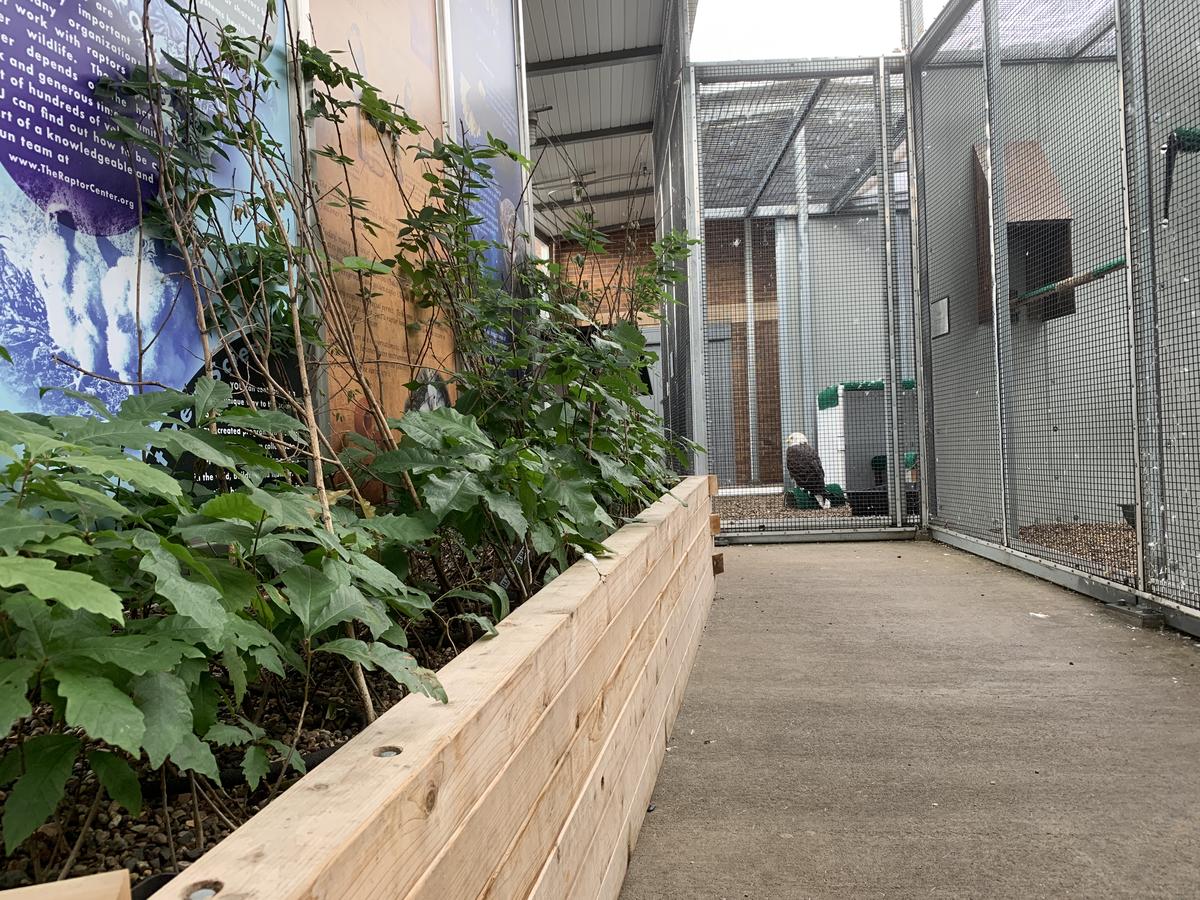
TRC partners to grow Minnesota’s bird habitat
Minnesota has an estimated 1 billion ash trees, all of which are at risk of dying due to emerald ash borer—a small, invasive beetle whose larvae feed inside the trees, eventually killing them. The insect was first found in St. Paul in 2009 and signaled a threat to our local forest canopy. Coupled with the concerns of a changing climate, the race is on to prepare our forests for problematic impacts.
Mississippi Park Connection, a nonprofit in St. Paul, has partnered with several organizations, including The Raptor Center (TRC), to build community tree nurseries to address these threats. Using a unique approach, the tree nurseries use gravel in place of dirt to encourage thick, fibrous root growth early in the tree’s development, which increases its survival rate once transplanted in the wild. At TRC, five native tree species were chosen due to their resilience to invasive species, alignment to future climate projections, and ecological benefits.
“Reforesting with smart species selections and healthy stock that comes from community tree nurseries is key to the success of this initiative,” says Mary Hammes, environmental stewardship and volunteer manager at Mississippi Park Connection. “Our goal is to plant 15,000 trees by fall of 2021. We are prioritizing areas that are most likely to be impacted by the loss of ash, are facing intense invasive species pressure, have high benefit for habitat, and are likely to be impacted by our changing climate.” The community effort currently has seven partners hosting community tree nurseries, with 6,300 trees planted so far in the program and another 2,000 expected this fall.
This past October, volunteers planted TRC’s 250 trees at Lilydale Regional Park along the Mississippi River. “We need healthy forests for a strong ecosystem, not just for raptors but for all species,” says Nancie Klebba, volunteer coordinator at TRC. “With this year’s planting completed, we’re ready to start all over again next spring.”